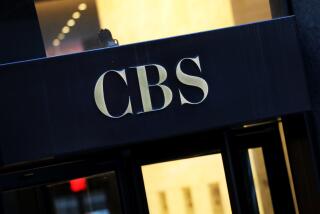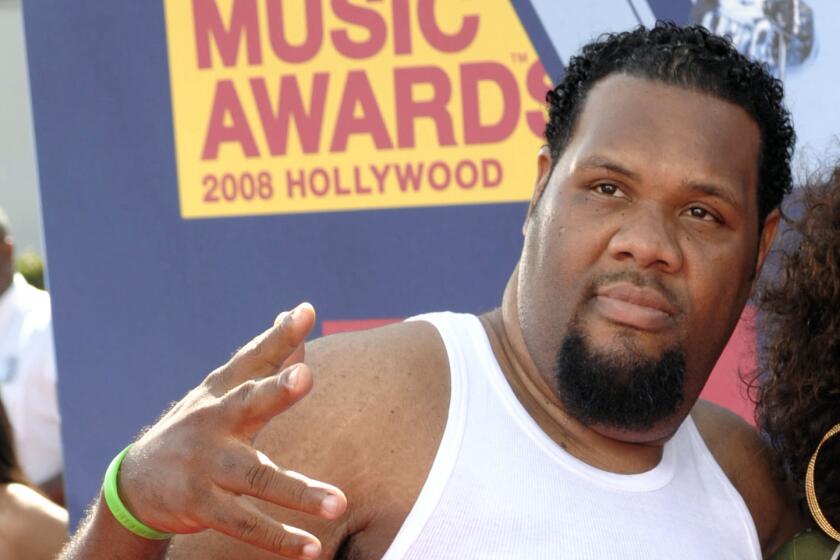Broad’s vision for downtown
Los Angeles took quiet but significant steps forward this week when officials overseeing downtown’s stalled Grand Avenue project approved the outlines of a deal likely to bring philanthropist Eli Broad’s private museum of contemporary art to a site adjacent to Disney Hall.
FOR THE RECORD:
Economist: Tim Rutten’s column on April 24 misspelled the name of a local economist. He is Jack Kyser, not Jack Keyser. —
FOR THE RECORD:
Broad museum: Tim Rutten’s column on April 24 about the possibility of Eli Broad bringing his art collection to a new museum in downtown Los Angeles misspelled the name of a nearby performing arts school. It is the Colburn School, not the Coburn School. —
Because the agreement was reached in closed session, details haven’t been formally announced, but multiple sources confirm their essential outline:
The committee overseeing the project — a joint authority of the city, county and the Community Redevelopment Agency — is offering to lease Broad the 82,000-square-foot site for 99 years at $1 a year. The CRA also would borrow $30 million to construct a 300-space underground garage, with the money to be repaid by new taxes generated in the area. For his part, the billionaire and uber arts patron would agree to begin construction of the museum no later than Feb. 15, 2013, and would have four years to complete the facility. Broad will pay the architect’s fees and construction costs — estimated at between $40 million and $60 million — and his foundation will fund the museum’s projected annual budget of about $12 million out of a $200-million endowment.
The museum would house more than 2,000 works by an international who’s who of leading contemporary artists, drawn from both the Broad Foundation’s collection and the financier’s personal holdings. Plans for the facility include not only gallery space but a study center, shop, cafe and offices for Broad’s foundations. Since Broad resolved to construct a private museum, Los Angeles, Beverly Hills and Santa Monica — which already has on the table an offer comparable to the Grand Avenue committee’s — have vied for the project.
From the start, though, Broad has made no secret that he’s inclined toward the downtown venue, and he already has financed revisions to the Grand Avenue project’s environmental impact report out of his own pocket. There are multiple reasons why city and county officials ought to push this deal to conclusion — as well as good ones for overlooking reservations a sober person might normally raise.
To take the latter first, there’s the fact that Broad is co-chair of the Grand Avenue project’s board of directors, which, given the closed-door negotiations on the agreement, normally should raise more than a few cautionary eyebrows. The fact of the matter is, however, that Broad has emerged in recent years as one of the few L.A. philanthropists willing to put his money where his convictions are. He’s already a trustee of both the L.A. County Art Museum and the Museum of Contemporary Art, and when the latter flirted with financial disaster recently, it was Broad who bailed it out. More to the point, it was the financier, along with former Mayor Richard Riordan and a handful of others, who first envisioned an entertainment/cultural corridor for downtown, stretching along Grand and Figueroa from Dodger Stadium on the north to the Coliseum on the south. Broad did the fundraising that saw Disney Hall through to completion and gave the money that made the new landmark performing arts high school a reality.
None of this is a secret, and penalizing him for the breadth of his civic engagement is, at this point, worse than small-minded.
Moreover, the collapse of the property market has put the Frank Gehry-designed Grand Avenue project on life support. Siting the new museum alongside Disney Hall and across the street from MOCA and the Coburn School would create a downtown magnet for cultural tourism, and is at least a partial step toward keeping the Grand Avenue project alive until the recovery actually takes hold.
This week, county Supervisor Mike Antonovich’s planning deputy, Paul Novak, objected to the proposed agreement because it would substitute a museum for a retail center. “The question we are asking is why is the city proposing to give away one of the most valuable pieces of property in downtown Los Angeles to one of the richest men [in the nation] rather than putting it to tax-producing revenue uses?”
Economist Jack Keyser has an answer to that one: “Construction of the Broad museum downtown would be a major event for all of L.A. County, because tourism is our No. 1 industry. Retail, on the other hand, is the most toxic part of the property market because we’ve overbuilt to such an extent there.”
On the other hand, Keyser points out, “Cultural tourists who will be attracted in even greater numbers to Grand Avenue if this museum were built, [will] stay longer and spend more than any other tourist.”
The proposed Broad museum is precisely the sort of visionary project that not only will help push the city and county further toward economic recovery, but also has an eye firmly on the future. It ought to be pushed through to completion.
More to Read
The biggest entertainment stories
Get our big stories about Hollywood, film, television, music, arts, culture and more right in your inbox as soon as they publish.
You may occasionally receive promotional content from the Los Angeles Times.










